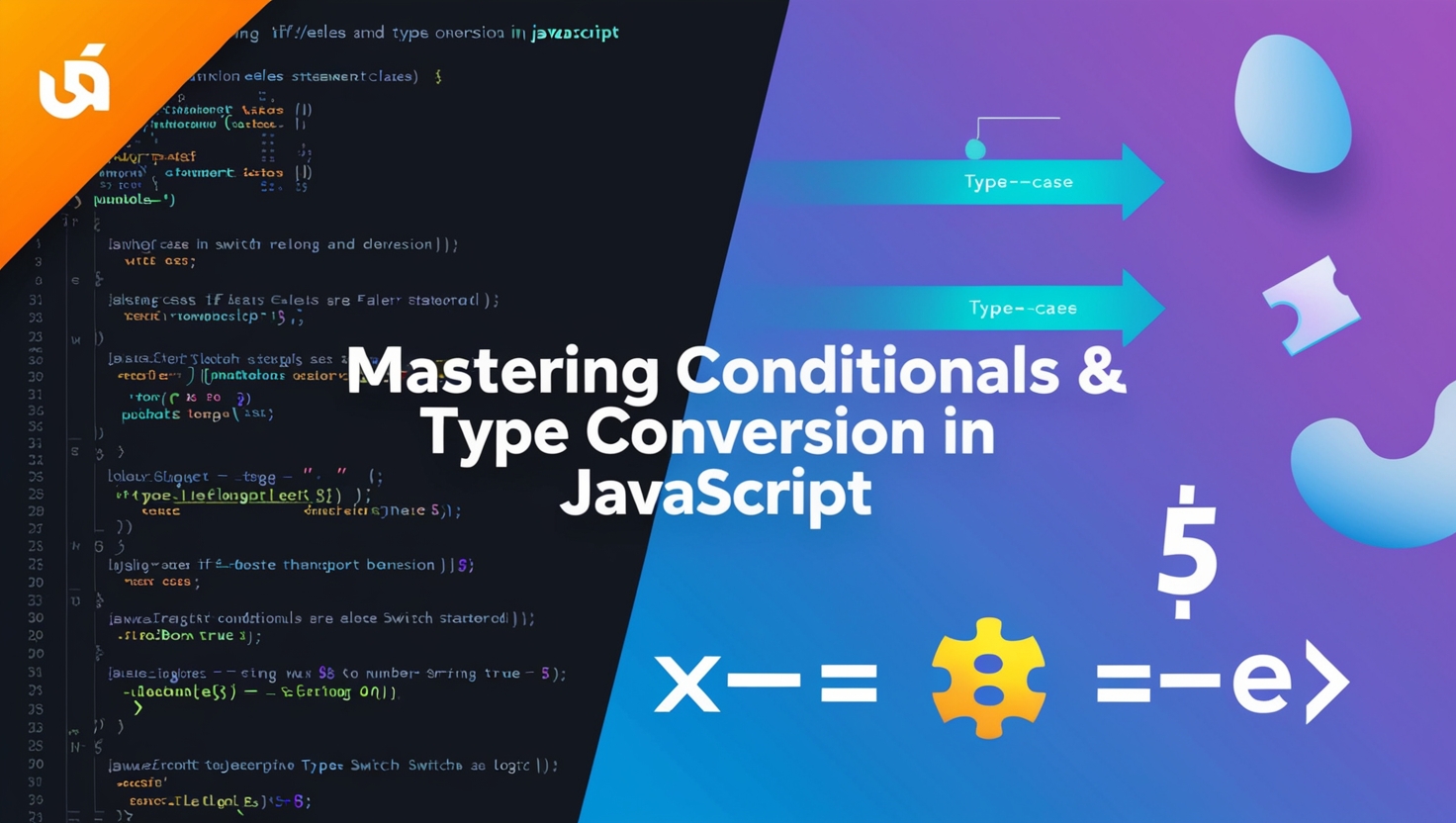1. Introduction
JavaScript is a dynamic programming language that allows developers to write flexible and powerful code. One of its key features is its ability to handle different data types and make decisions using conditional statements. “Conditionals and Type Conversion” play a crucial role in ensuring that JavaScript code behaves as expected, regardless of the data it processes. In this article, we will explore how conditionals work, how JavaScript handles type conversion, and how these two concepts interact to create robust applications.
2. Understanding JavaScript Conditionals
Conditionals allow JavaScript to execute different code blocks based on certain conditions. This feature is essential for decision-making processes in any program. JavaScript offers multiple ways to implement conditionals:
2.1 If Statement
The if statement checks if a condition is true and executes the associated block of code.
let age = 18;
if (age >= 18) {
console.log("You are eligible to vote.");
}2.2 If-Else Statement
The if-else statement provides an alternative block of code if the condition is false.
let age = 16;
if (age >= 18) {
console.log("You can vote.");
} else {
console.log("You are too young to vote.");
}2.3 Else If Statement
When multiple conditions need to be checked, else if statements are used.
let score = 85;
if (score >= 90) {
console.log("Grade: A");
} else if (score >= 80) {
console.log("Grade: B");
} else {
console.log("Grade: C");
}2.4 Switch Statement
The switch statement is an alternative to multiple if-else conditions.
let day = "Monday";
switch (day) {
case "Monday":
console.log("Start of the workweek!");
break;
case "Friday":
console.log("Weekend is near!");
break;
default:
console.log("Just another day!");
}3. Truthy and Falsy Values
JavaScript evaluates expressions as true or false, even if they are not explicitly Boolean values.
3.1 Truthy Values
Any value that is considered true in a conditional context.
if ("Hello") { // Non-empty strings are truthy
console.log("This is a truthy value.");
}3.2 Falsy Values
Values that evaluate to false in JavaScript:
false0""(empty string)nullundefinedNaN
if (0) {
console.log("This won't execute because 0 is falsy.");
}4. Type Conversion in JavaScript
Type conversion is the process of changing one data type into another. JavaScript handles type conversion in two ways: implicit and explicit.
4.1 Implicit Type Conversion (Type Coercion)
JavaScript automatically converts data types when necessary.
console.log("5" + 3); // "53" (Number converted to String)
console.log("5" - 3); // 2 (String converted to Number)4.2 Explicit Type Conversion
Developers can manually convert data types using built-in functions:
console.log(Number("123")); // Converts string to number
console.log(String(123)); // Converts number to string
console.log(Boolean(1)); // Converts number to boolean (true)5. How Conditionals and Type Conversion Interact
When using conditionals, JavaScript often performs implicit type conversion to determine whether an expression is true or false.
let value = "0";
if (value) {
console.log("Truthy value"); // "0" is a truthy value
} else {
console.log("Falsy value");
}This behavior can sometimes lead to unexpected results, so understanding type conversion is crucial when writing conditionals.
6. Practical Examples
6.1 Example 1: Validating User Input
let userInput = "123";
if (Number(userInput)) {
console.log("Valid number");
} else {
console.log("Invalid input");
}6.2 Example 2: Checking Empty Values
let user = "";
if (!user) {
console.log("User not found");
}7. Best Practices
- Use Strict Equality (
===): Prevents unexpected type conversions. - Convert Types Explicitly: Avoid relying on JavaScript’s implicit conversion.
- Avoid Loose Comparisons (
==):0 == falseevaluates totrue, which can lead to confusion. - Handle Edge Cases: Consider how
null,undefined, or empty strings might impact your conditionals.
8. Common Mistakes to Avoid
- Forgetting About Falsy Values: Empty strings,
0, andnullare falsy. - Misusing
==Instead of===: Loose comparison can cause unintended type coercion. - Not Understanding Implicit Type Conversion: It can lead to unexpected results in conditionals.
9. Conclusion
Understanding “Conditionals and Type Conversion” is essential for writing robust JavaScript applications. By mastering conditionals, truthy and falsy values, and type conversion, developers can avoid common pitfalls and create efficient, bug-free code.
10. Further Learning
11. Quiz (Optional)
- What is the difference between implicit and explicit type conversion?
- Which values are considered falsy in JavaScript?
- What will
console.log("5" - 2)output?
12. FAQs
Q1: Why does "5" + 2 return "52"?
A: JavaScript converts the number to a string and concatenates them.
Q2: What is the best way to avoid type conversion issues?
A: Use strict equality (===) and explicitly convert types when needed.
Q3: Are null and undefined the same in conditionals?
A: No, null == undefined is true, but null === undefined is false.

Leave a Reply